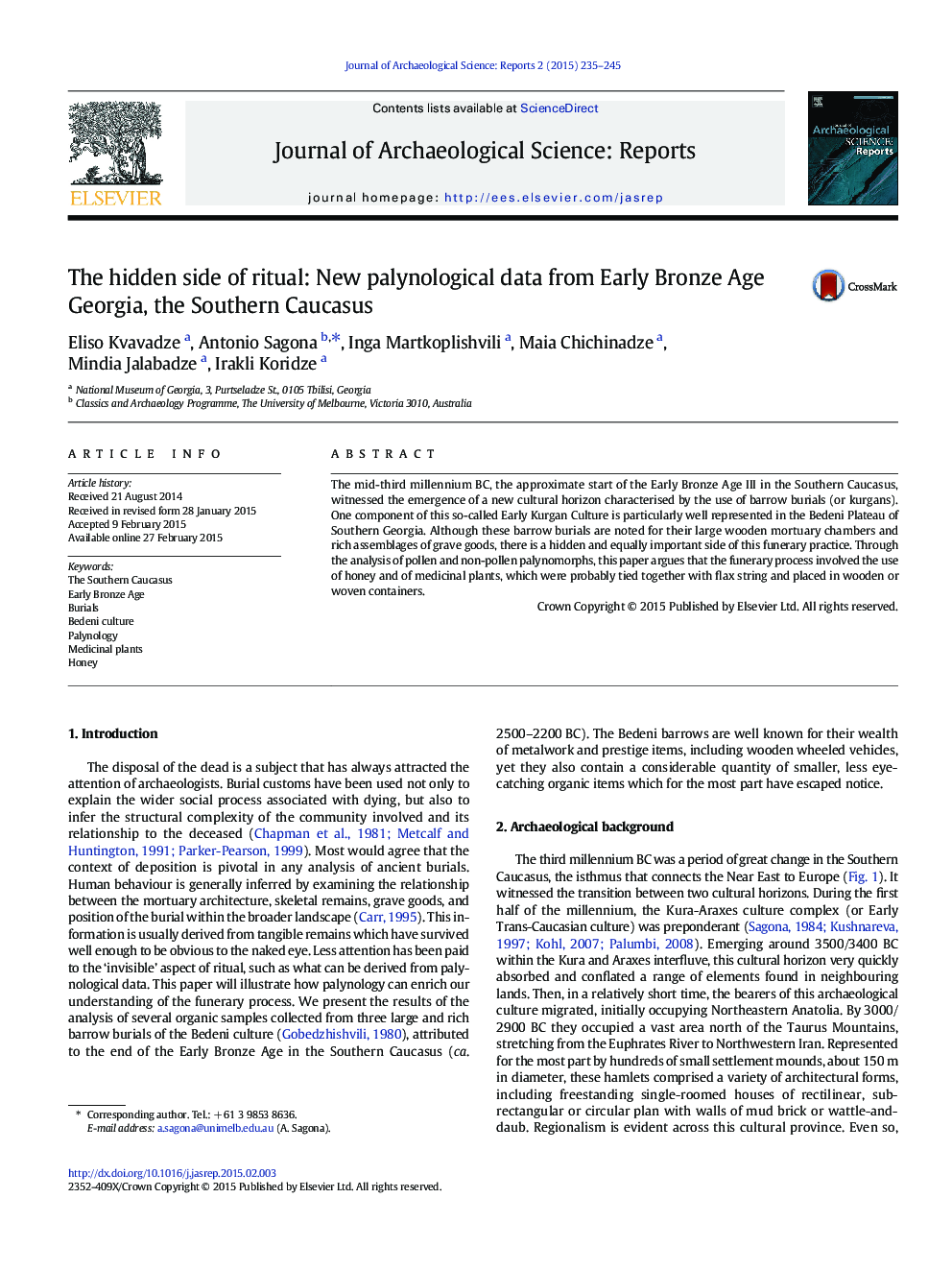| Article ID | Journal | Published Year | Pages | File Type |
|---|---|---|---|---|
| 7446244 | Journal of Archaeological Science: Reports | 2015 | 11 Pages |
Abstract
The mid-third millennium BC, the approximate start of the Early Bronze Age III in the Southern Caucasus, witnessed the emergence of a new cultural horizon characterised by the use of barrow burials (or kurgans). One component of this so-called Early Kurgan Culture is particularly well represented in the Bedeni Plateau of Southern Georgia. Although these barrow burials are noted for their large wooden mortuary chambers and rich assemblages of grave goods, there is a hidden and equally important side of this funerary practice. Through the analysis of pollen and non-pollen palynomorphs, this paper argues that the funerary process involved the use of honey and of medicinal plants, which were probably tied together with flax string and placed in wooden or woven containers.
Related Topics
Social Sciences and Humanities
Arts and Humanities
History
Authors
Eliso Kvavadze, Antonio Sagona, Inga Martkoplishvili, Maia Chichinadze, Mindia Jalabadze, Irakli Koridze,
